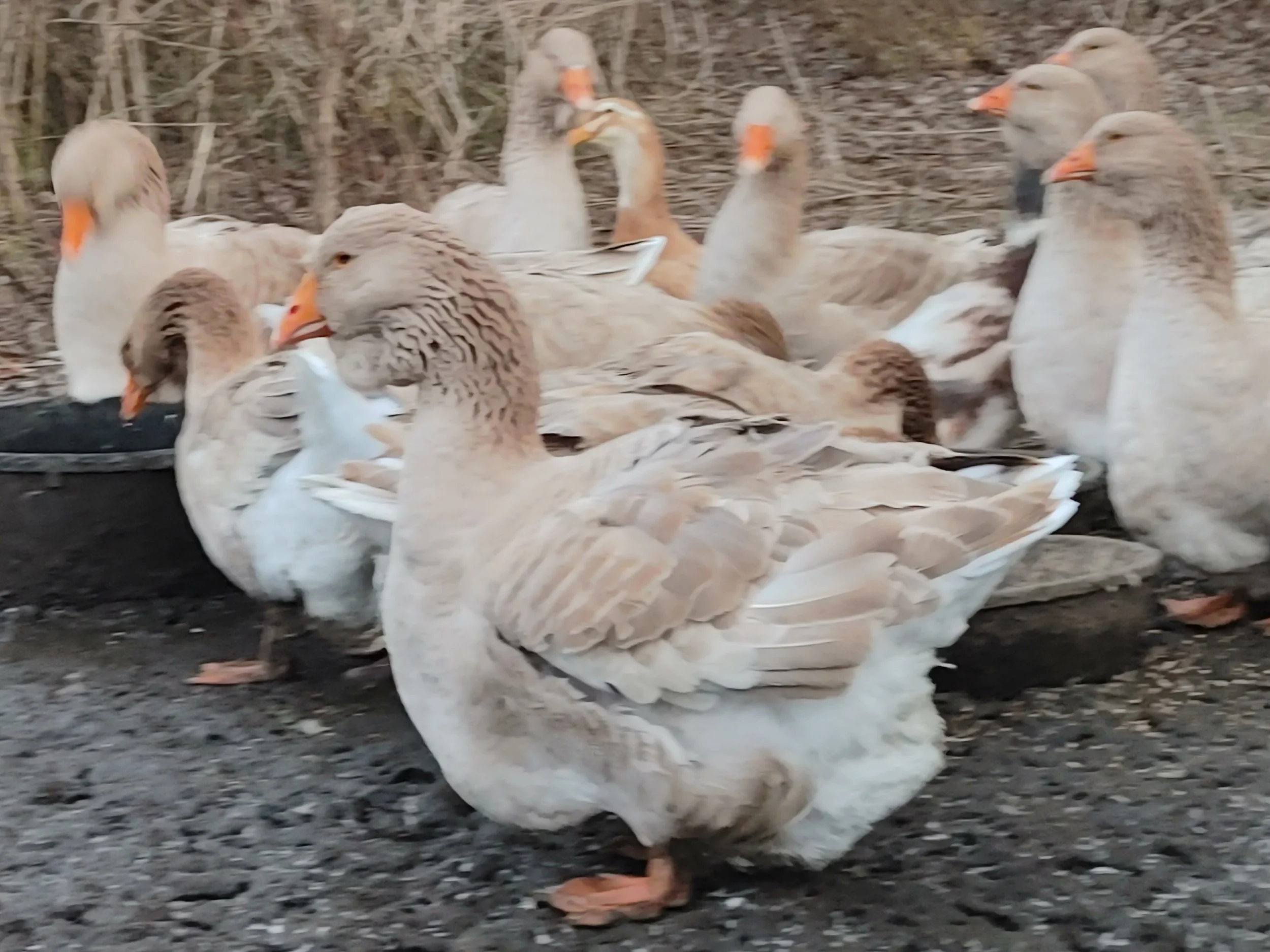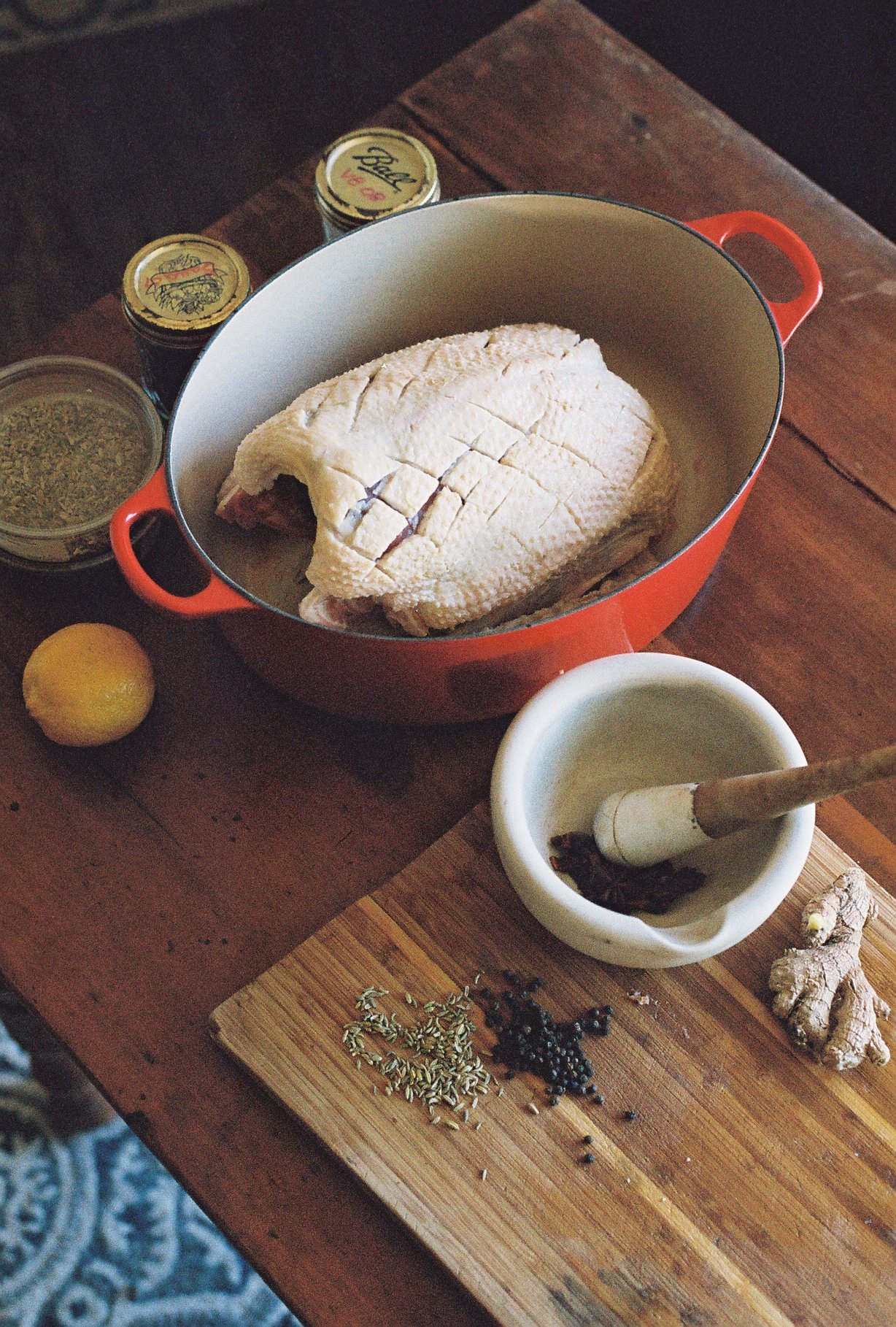Buff Toulouse Geese
The Toulouse is a heavy breed of goose originally developed for meat and fattened liver production. The breed takes its name from the city of Toulouse in southern France, just south west of Bordeaux. Theodore F Jager, in Harrison Weir’s The Poultry Book writes “It has long been distinguished in France as possessing rare excellence in fattening and other qualities, being profitable and preeminently hard and well-fleshed, and, therefore, a good marketable variety.” The old geese in the vicinity of this city were famous for size and productivity since the beginning of the nineteenth century, but whether these qualities were recent developments or characteristics of the local geese is unknown. The Toulouse was first imported to England by the the thirteenth Earl of Derby, Edward Smith-Stanley, in the winter of 1846/7, having then been known as the ‘Mediterranean’ or ‘Pyrenean’ and also ‘Toulouse’. The Grey Toulouse was recognized in the original Standard of Perfection in 1874. The Buff Toulouse, recognized by the American Poultry Association in 1977, should be an even shade of buff with each feather of the back and flank edged with nearly white.
Goose cracklins, a delicious snack resulting from the fat rendering. Photo credit: Katie Carothers
The Toulouse, at one time, was considered an excellent farm goose with the ability to fatten better than other breeds, and I believe our flock today reflects those utility traits without sacrificing it’s commanding beauty. It is in the heavy class, and along with the Embden, possesses the largest standard weights of any breed of goose. The Toulouse is a massive and imposing breed of goose. The body of the bird is wide, long, and very deep. The breast is wide, proud, and smoothly attaches to the keel which nearly drags the ground. In the old French writing, A Treatise on the Breeding and Fattening of Poultry (translated from the original French in 1810) the Toulouse is described as such “It is in the Upper Languedoc especially that geese bred well, and are as large as swans; their distinctive mark is in having under the belly a lump of fat, which hangs on the ground the moment these birds walk. The fat is not very prominent until the month of October; it increases as the bird gets plump…” The overall type is of a deep, large, rectangularly built bird.
A Toulouse goose breast scored and ready to receive a spice rub. Photo Credit: Katie Carothers
We don’t eat goose much in this country anymore, which is a shame. Despite geese having long been a major poultry concern on family farms in this country, they have fallen out of vogue. M des Essarts in The Poultry Bulletin of the Association of Breeders of France comments that “The Toulouse goose is the foundation of the kitchen of the southwest” Traditionally, farm flocks of geese were used for their fat, feathers, and flesh. Their fat was used in medicine and lubricants, their feathers in bedding and clothing, and of course their flesh was used in the most important celebratory feasts. It wasn’t until very recently that the turkey took center stage as a Christmas holiday roaster. The APA Standard of Perfection, 1998 Edition says, regarding the economic qualities and conservation of domestic goose breeds “Today, the economic qualities of geese are less important for meat and feathers in a society which consumes very little waterfowl per person than when it is sold for exhibition purposes. If not for exhibition value, many breeds would be lost to crossbreeding and neglect resulting from the absence of a meat marketability for most breeds.”
My friend and fellow poultry conservationist, Craig Russell says “Geese were once the traditional Christmas meal and competitive with turkeys for special occasions and large get-togethers anytime. But today, due to concerns about high fat diets and the decline of the traditional family farm, the geese are the least used of our traditional poultry. Commercial production has nearly ceased, and is largely dominated by the Embden. Yet unlike the situation with turkeys, where commercial production has soared far beyond traditional levels leaving many historic varieties flirting with extinction, most recognized breeds of geese have remained relatively popular as show birds and have retained safe population levels.” Despite most of the APA standard varieties of geese being considered safe in their modern population levels, more and larger flocks need to be established and maintained with a balance of their exhibition, utility, and commercial potentials in mind. Here at our farm, I try and find this balance. Although not as large or refined as the great exhibition strains, our Buff Toulouse are gentle, large, and active birds with excellent fertility, and I rarely allow them to sit, as they are poor mothers. The buff color allows them to dress out beautifully, and they make a stunning holiday meal.
Buff Toulouse flock in winter



